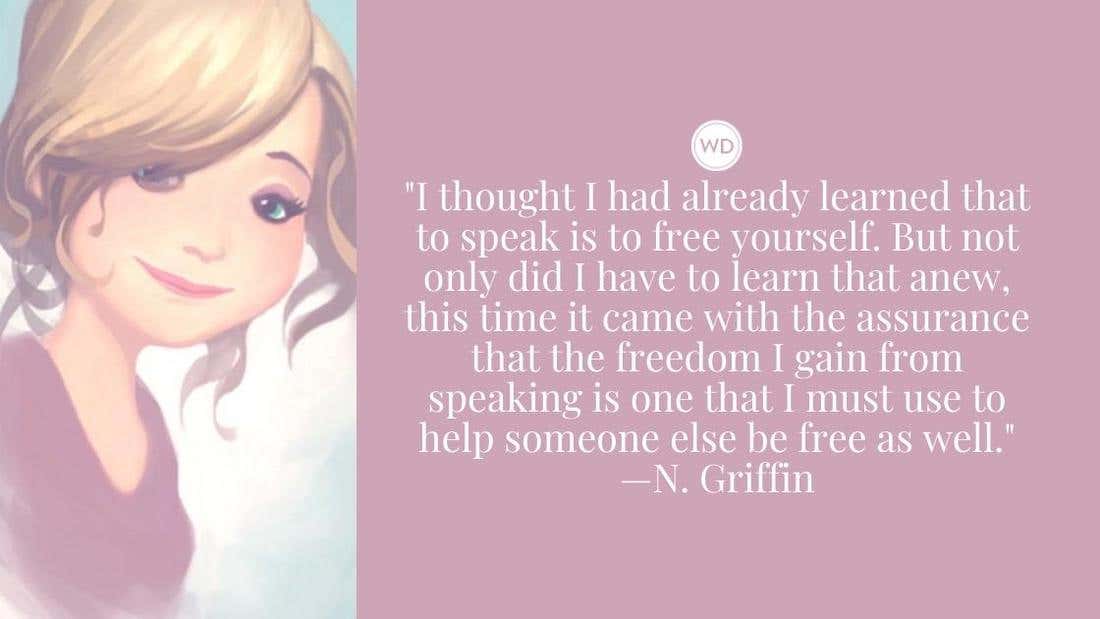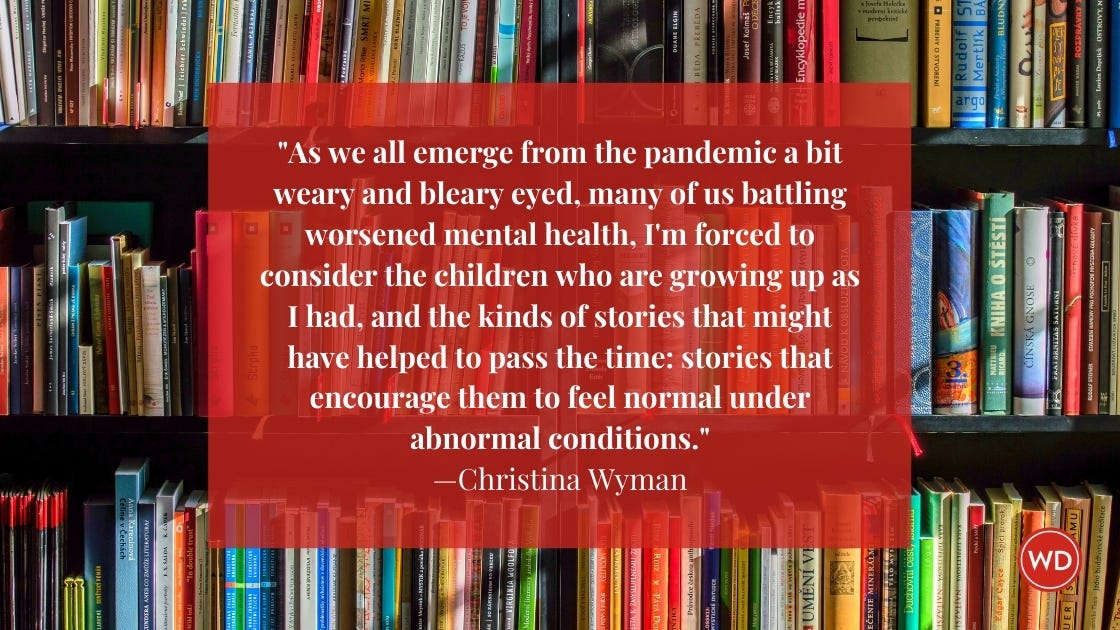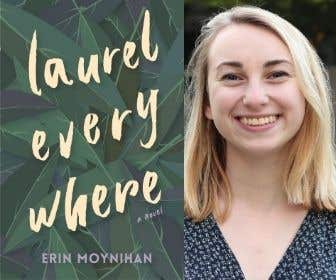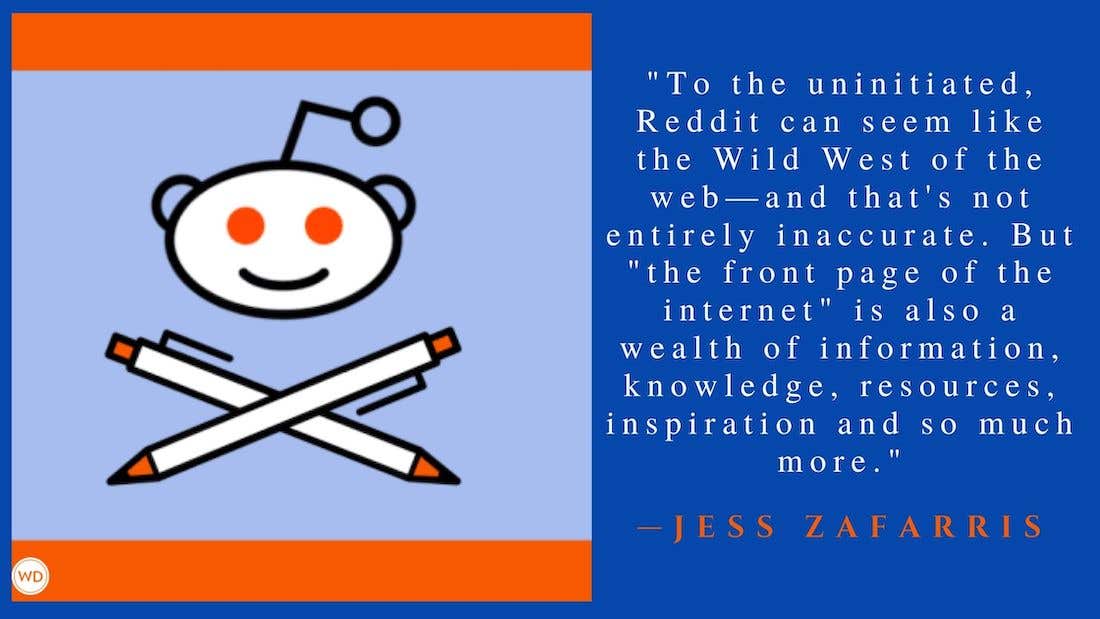THE WD INTERVIEW: ANN BRASHARES: ONE LEG AT A TIME
Ann Brashares zipped up her mega-selling the sisterhood of the Traveling Pants series this year and released her first adult novel. But, as she reveals in this interview, finding a new path isn’t easy.
In the midst of Brashares' stunning writerly success, including a bestselling YA series and, this year, releasing her first adult-fiction novel, the soft-spoken 40-year-old is also raising a family. Rising above the chaos, she says, optimistically, "My household is, in a nice way, very busy."
Brashares had the luxury of leaving an editorial position to write from home, but she still finds herself juggling motherhood and her career. "It's crazy having two books come out in one year," she says. Two books mean two tours. "I'll just have to bring the kids with me," she says. She laughs, but you know she means it.
After college, Brashares answered phones at book packager 17th Street Productions (now Alloy Entertainment)—the same company that produced Francine Pascal's Sweet Valley books. Book-packaging companies often use freelancers and in-house employees to research, write, edit and illustrate YA series and how-to books, which they then sell in final form to publishers.
"It was a small, dynamic company, and if you were excited and willing to take on work, there was a lot to be done," Brashares says. "I started doing a lot of editorial work, outlining, and even writing cover copy and editing." She ended up staying 10 years until she wrote her YA novel, The Sisterhood of the Traveling Pants, as an Alloy employee. Because of that, Alloy's name is associated with the series, but Delacorte Press, a division of Random House, is editorially responsible.
The first book in the series, published in 2001, quickly landed on The New York Times bestseller list. Brashares left Alloy and began writing full time from her New York City home, which she shares with her husband, artist Jacob Collins, and their three children. The hit series, now four books strong, has more than seven million copies in print.
This year, Brashares travels down a new path—in January she released the final book in her series, Forever in Blue. And this past June, she released her first adult-fiction novel, The Last Summer (of You & Me). Read on to find out what Brashares has to say about tackling touchy subjects in YA fiction and the difficulty of finding new beginnings.
AS A FORMER EDITOR WHO KNOWS THE ODDS IN PUBLISHING, WERE YOU SURPRISED WITH THE SUCCESS OF THE SISTERHOOD OF THE TRAVELING PANTS SERIES?
Yes, of course. It's always surprising when something does well. There are many things that I worked on and really liked that just didn't seem to get the attention or sales they deserved. So I was certainly more prepared for heartbreak than for success. YA was a lot less popular then, and as a first-time writer, you don't expect a lot. It's not like winning the lottery where one day your life is one way, and the next day your life is another. These things tend to happen gradually. I don't have the life of a famous person. But I do feel like I've been able to connect with a lot of people.
YOU WROTE THE SISTERHOOD SERIES IN YOUR 30S. HOW DID YOU ENSURE THAT YOUNG ADULTS WOULD RELATE TO YOUR CHARACTERS?
I try to just write the characters, and the characters in this case happen to be teenagers. I try to imagine the age they are and the stage of life they're in and penetrate that as well as I can. They're characters first and foremost. The fact that they're 16 or 18 is certainly an important factor of who they are, but that's just a part of it.
IN 2005, YOU WROTE AN ESSAY CALLED "UNDER THE COVERS" FOR THE NEW YORK TIMES ABOUT THE PLACEMENT OF YA BOOKS. DO YOU SEE TEENAGE PUBLISHING HAPPENING ANYTIME SOON?
There's a problem with the fact that books for teens are marketed, sold and publicized by the same teams that are doing Dr. Seuss stuff. But at the same time, I think the system functions reasonably well. Once in a while, there's a book you feel shouldn't really find its way into the hands of much younger readers. I wish there were more of a distinction, because books for teenagers don't necessarily blur into books for 9- , 10- or 11-year-olds. I have that problem with my book, too, particularly the fourth one. The characters are older, and I'm really pushing the edge of what's possible and reasonable to do in a YA book, not because I want to be racy or gratuitous, but just because my characters are 20 years old. To be truthful to them and not sidestep meaningful issues, I wanted to write about them as they are. But I try to be outspoken about this to say that these are really books for teenagers and not for young kids. I think it's important to be clear about that. The association between books for young readers and books for teenagers is close enough that infection can easily occur.
HOW DID YOU DECIDE HOW TO APPROACH YOUR SERIES' MORE ADULT THEMES, SUCH AS SEXUAL EXPERIENCES AND DRINKING?
I tried to stick close to the characters, to not make arbitrary decisions about what they would or wouldn't do, but rather to just be guided by them—who they are, what they're doing and what they're thinking about. I tried to be as truthful to their experience as I could. I tried to make romantic and sexual relationships be consequential and affect who they are, and I tried not to be jaded or dismissive about it. I wanted to bring them up as emotional issues, first and foremost. But I didn't want to be scolding, either. Love is thrilling, and there are times when it's the right time and the right person and the right thing, but there are also many, many times when it's not, and I think girls can mess themselves up over these issues pretty easily. So I wanted to have a character experiencing what felt realistic.
In a way, particularly for that first book when the characters were younger, I wanted to be a little less clear about what was going on. I ended up taking stuff out. It's difficult to know how to do it right. I think a lot of writers who write for this age level struggle because it's something teenagers are experiencing, but how to handle it is difficult.
HOW INVOLVED WERE YOU IN THE MAKING OF THE SISTERHOOD OF THE TRAVELING PANTS MOVIE, AND WHAT WAS IT LIKE TO SEE YOUR PLOT LINES, CHARACTERS AND SCENES COME TO LIFE ON SCREEN?
I wasn't involved in any official capacity. But once I got to know the producers and the director, I felt like they were very welcoming and sweetly solicitous of my opinion, although they were no way bound to take it. It ended up being a very happy experience. I enjoyed being involved in the publicity and promotion efforts, which I was happy to do because I really did enjoy the movie; I think they did a great job. It's thrilling to see a story that's taken place in your head so big and loud and colorful and available in this different way to so many people. It's also funny because you make little, arbitrary decisions as a writer, like it's raining at night or something, and you actually see them try to do it on the screen and oh, how expensive and labor intensive every single thing is. It's a lot easier to write.
HAS IT BEEN DIFFICULT TO CONTINUE WRITING FOLLOWING THE ENORMOUS SUCCESS OF THE TRAVELING PANTS SERIES?
In some senses, I feel like I've won the opportunity to write more books—and that's great. Whether they'll succeed or not, I can't say. But at least I have an opportunity. If I think about it too much, I can worry and paralyze myself with: What if it's disappointment? What if it's not good enough? What if the next thing doesn't work or what if people's expectations are different? These are the things we all worry about, but if you've had something succeed, you do have a bar, and you feel like you should live up to it. I can intimidate myself, but I'm trying not to. Once I'm really writing, those considerations do tend to fall away, as they should. If you're really deep into a story you're trying to tell and the characters you're trying to know, I think those considerations are just layers, and you should dig down under them.
TELL ME ABOUT YOUR FIRST ADULT-FICTION NOVEL, THE GIRL OF LOST THINGS.
I had the intention of publishing it when I was writing it, b ut when I got to the end, I didn't feel like it was right. It came at the end of a very difficult personal experience. So it was a post-traumatic book in a way. And it was lonely and sad. I read it, and I thought, I don't feel like this is right for me now. So I put it on the shelf. And the publisher was very understanding.
DID WRITING THAT BOOK HELP YOU THROUGH YOUR DIFFICULT PERSONAL EXPERIENCE?
Honestly, I don't know. For me, an experience that was very close to me made it a lot harder to write what I was trying to write. To write a story, I think you really have to open yourself up to the world. And when you go through an experience that's really terrifying and painful—I mean, I felt like I didn't even look at the sky for a month. I just sort of forgot it was there. You can't write well in that mode. So I just put it away, which I think was the right thing to do. And I may bring it back someday and rewrite it and come to like it. But not every book is meant to be published, and I think that's freeing for writers. Some writing you just do for the sake of writing, whether it helps or it hurts.
YOUR FIRST PUBLISHED ADULT-FICTION NOVEL, THE LAST SUMMER (OF YOU & ME), COMES OUT THIS SUMMER. WHAT'S IT ABOUT?
It's about three people in their twenties. There are two sisters and this young man, and they've shared their childhood in this tiny beach community. Having had intense, close relationships growing up, they come back together after a few years. It's a love story. It's about loss and growing up. It's about all my favorite themes.
WHAT WAS THE TRANSITION FROM EDITOR TO AUTHOR LIKE?
The creative process and the editorial process are pretty different. You can't do both at the same time. I learned how to separate the two. When I write, I try to stay squarely in the creative mode. After I'm done writing for the day, I leave my computer on and the page I'm working on up. Re-entry's always hard for me, so I try to make it as easy as possible. When I sit down the next morning and bring my computer back to life, there are the pages I've written staring at me. So instead of flipping on the news or doing something else, I'll edit what I've done.
SO YOU EDIT IN THE MORNING?
Yes. My evenings tend to be purely creative. Often I read what I wrote after I've gotten the kids to school, and it'll be like, "This seemed to make sense late at night—now I'm kind of wondering." My training and experience as an editor has been helpful to me because there are many things I know to watch out for, almost subconsciously. Not only do we learn from our own mistakes but also, in some cases, from other people's mistakes. As an editor, I've been deeply involved in the diagnosis and repair of a lot of manuscripts; I've spent many years thinking about how to fix and avoid pitfalls.
WHAT'S YOUR WRITING PROCESS LIKE?
I tend to put off starting for as long as possible. I'm an adrenaline-motivated person. I think and imagine and plan and have it all rattling around in my head for a while before I actually sit down to write. Sitting down is very hard. I write at night, but I try to work for a few hours during the day. My most profitable writing time is between 9 p.m. and 2 a.m. Some people find they're freer in the morning, but I'm not much of a morning person. I become very absorbed in short periods. I don't work 10 a.m. to 3 p.m., nine months straight, but I will work 10 hours a day for two or three months straight.
DO YOU OUTLINE YOUR STORIES?
I typically do start with an outline. To the extent I detour from it, I'm always happy. Because starting is hard for me, I feel much more comfortable when I have some feeling of where I'm going. But I welcome change, and I always like to be surprised by a new way of getting there. I didn't really outline The Last Summer (of You & Me). I just thought I'd try it a different way.
AND HOW DID THAT GO?
It went pretty well. In some ways the writing process was a little bit harder. Uncertainty is always difficult.
WHAT ADVICE WOULD YOU GIVE TO BEGINNING WRITERS?
For me, starting is hard so I really need to give myself permission to do a bad job. I always give myself leave to write total nonsense for as long as I need to release the pressure, because it's really hard to start if you feel like that first sentence you write has to actually mean something. So I tell myself that this is the first page of the book but it doesn't need to be used for anything, just for warming up. That said, I often don't take myself up on it. I end up jumping in pretty fast.
Some people are great at starting things and have trouble finishing. And that's something I can understand, too. There were times in writing the first book that I felt like, I can't write a book. I felt like the structure was too complicated, that I was going in all the wrong directions. Finally I said, "I'm just going to have faith. Even if it doesn't turn out well, I'm just going to have faith in the choices I've made. I'm going to see it through." You can go back and clean it up. But if I hadn't had a deadline and a publisher who'd taken an interest in the book, I don't know if I would've kept going.
There are going to be moments of deep, deep doubts, and you have to have faith that your initial idea was good and just muddle through. I think it's particularly hard when you start to think it's not worth finishing. I remember when I was working on The Girl of Lost Things, and I had a feeling that I wasn't going to publish it. I still made myself finish. Better a forceful goodbye than to feel like you slunk away from it in the middle of finishing it. And that's not the right thing for everybody but it felt like the right thing for me.
Kara Gebhart Uhl (KaraGebhartUhl.com) is the author of Cadi & the Cursed Oak, illustrated by Elin Manon (Lost Art Press). She has been writing and editing professionally for more than 20 years and has served as managing editor at Popular Woodworking and Writer’s Digest magazines. Today her freelance clients include book publishers, magazines, universities, blogs, and companies. Her essays and poetry have appeared in The New York Times online, TIME online, Literary Mama, Motherwell, and This I Believe: Life Lessons (Wiley). She lives in a 1910 house in Fort Thomas, Ky., just south of the Ohio River, with her husband and three teenagers.








